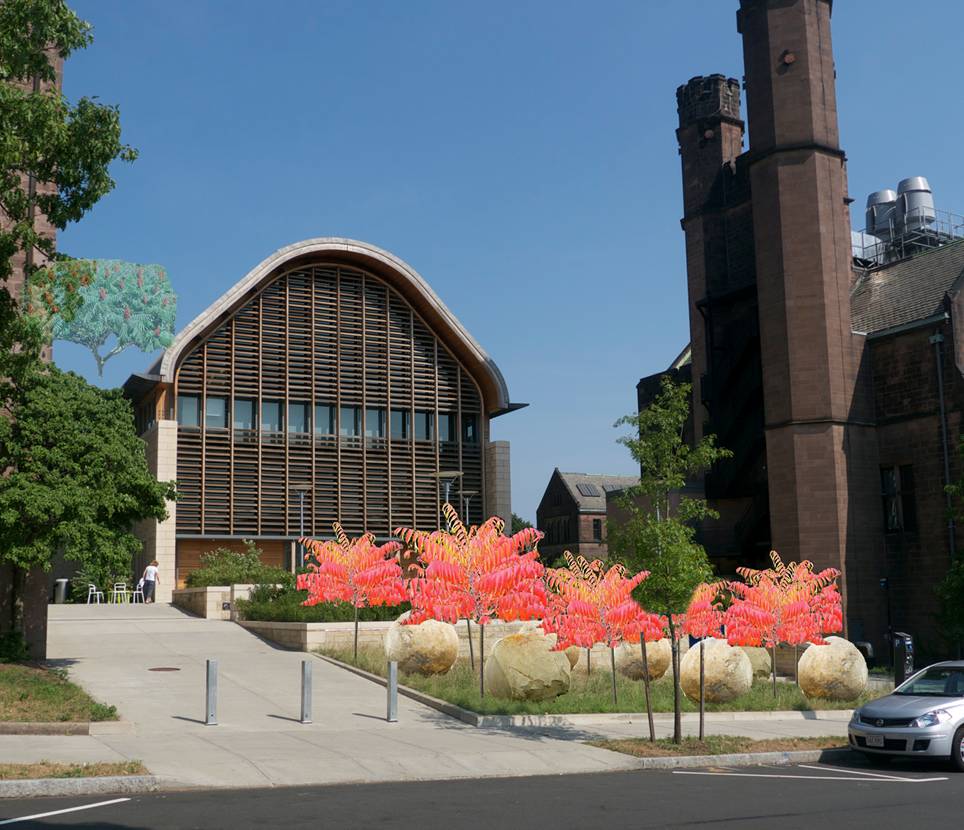
Ever wish the landscaping in front of Kroon Hall was as appealing as the architecture? What if the home of the Yale School of Forestry and Environmental Studies was graced by a successional landscape that was seasonally dynamic, aesthetic, and, most of all, functional as a small park?
Well, Yale’s Urban Ecology and Design Lab (UEDLAB) envisions just such a garden.
In the above image, we suggest adorning the front of Kroon with boulders, providing climbing and seating opportunities for students –– and an alternative entrance to the building for people willing to scramble. Native species of trees and shrubs like Staghorn Sumac (Rhus typhina) would be planted between the boulders, and warm-season grasses provide understory amongst stepping-stones and pea gravel.
Redesigning the front of Kroon wouldn’t require much in the way of materials: it could be done with little more than boulders, soil amendments, sumac saplings, and understory plants. The boulders could be selected from local stones to relate to the surrounding buildings –– for example, dark native arkose would nicely reflect Osborn Memorial Laboratories, although a lighter Hamden granite could be compelling too. The dry identity of the boulder field would also create a powerful contrast with the Kroon Wetland.
By establishing a successional plant community in front of Kroon Hall, we intend to spark a trend across the Yale campus: replacing lawns with biologically diverse ecoystems. Our proposal not only promotes the aesthetic appeal of ecologically-informed landscaping, it also demonstrates the value of combining natural systems with human recreation. Hopefully landscapes like this one become the norm around Yale –– and what better place to begin that process than at FES?